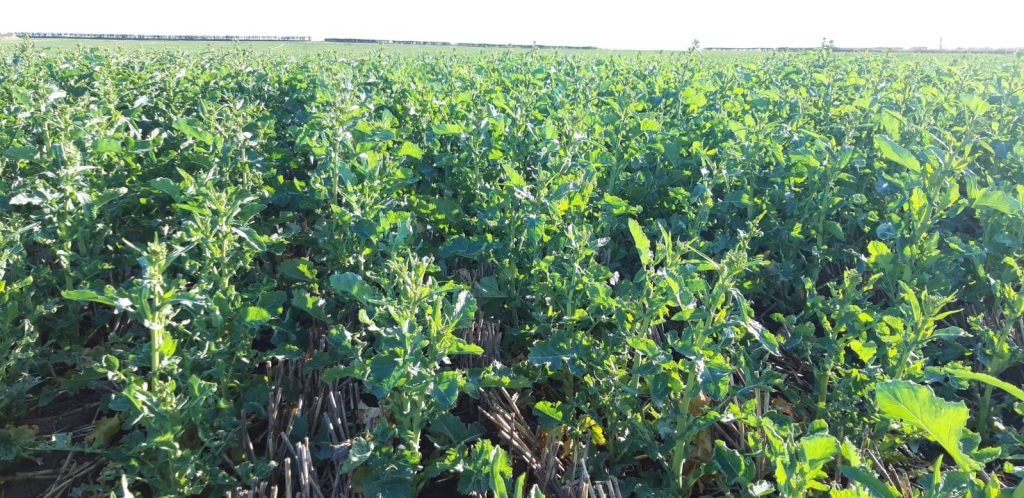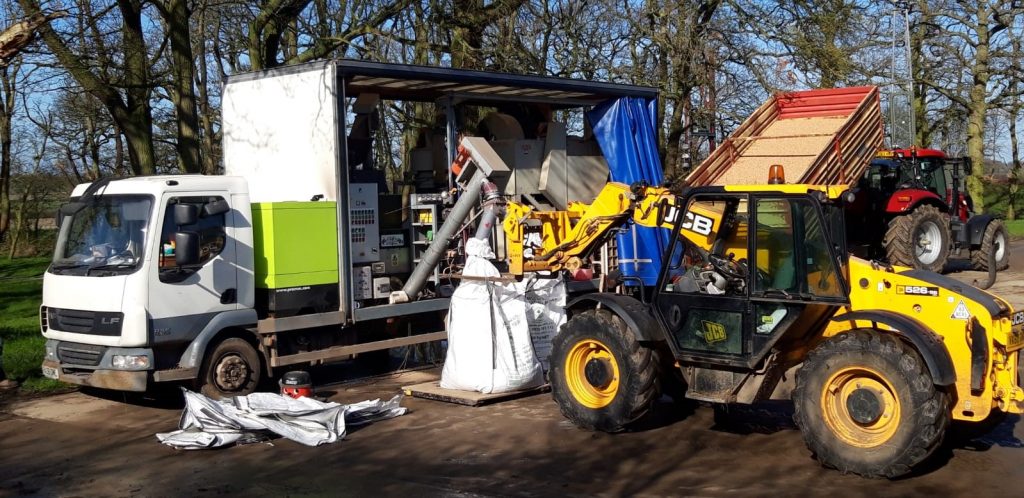February turned out to be an eventful month. Having been reminded at Lamma of the saying ‘February fill dyke’, surely I thought this year will be an exception… But two named storms later and with significant areas of the county flooded, it turns out five consecutive months of above average rainfall was indeed perfectly possible.
Oilseed Rape got away well and continued to move
The beginning of the month saw our crop starting to move, in particular the variety DK Expedient which also proved its ability to get out of the blocks quickly and grow away during last years Spring. A good starting pace has to be a key attribute I feel, because as we’ve seen this year, CSFB larvae can be found without too much effort, so it’s important that the crop responds early so as to not risk being overwhelmed.
We’ve always been quite lucky at Springfield Farm, in that the combination of a fast-moving variety, and a good nursery seedbed with accurate drilling depth and reconsolidation allows our OSR to establish consistently year on year. This helps to mitigate a lot of the risks associated with growing rape which are causing the crop to lose favour with a lot of growers.
After such a wet winter resulting in low soil nitrogen levels, I applied 25kg/ha of nitrogen during the first week of February. This was just enough to give the crop a kickstart and an amount that is quickly washed in, rather than away!
Last field of Winter Wheat drilled in early Feb
Among the relentless deluge, there was the slightest of weather windows which allowed me to roll out the Mzuri Pro-Til to drill a field of Gleam (450 seeds/ m2) on 5th February. This is the latest I’ve ever sown a winter variety, so I’m interested in monitoring its progress, with the last time being January 2013 on hard frosts.
The variety Gleam has a latest safe sowing date of mid-February; I just hope after what has been a mild winter that the crop has enough cool weather for its vernalisation. I was impressed with how the Pro-Til made a decent seedbed in what were marginal conditions, which was put to the test three days later with the arrival of Storm Ciara. The improvements to our soil structure over the years have certainly been proving their worth this year.
Preparations for Spring cropping underway
Preparations for spring cropping began in earnest in February, starting with the cover crops that didn’t see sheep which I sprayed off between showers. The covers were visually very sluggish to die off, symptomatic of the cold, wet soil conditions. Interestingly, large parts of one field turned red as opposed to the usual orange as did the field over the hedge containing the same mixture. This was suggested by our agronomist to be a sign of BYDV infection in the oat element of the mixture, a reminder of what may lie ahead with the loss of deter.
After last year’s hefty cost for Lynx spring bean seed, this year’s decision was decisively easier. We decided to farm save 12 tonnes and with a sample sent to PGRO for assessment coming back with a clean bill of health we were good to go. The rain delayed our first attempt to have it cleaned, but when the sun finally did shine, Goldingham Contracts had processed the seed for us within a couple of hours – achieving a good sample ready for drilling.

Our OSR is moving on nicely despite the relentless rain

Moody skies have been a permanent feature over our OSR this month

12 tonnes of beans have been farm saved for spring drilling